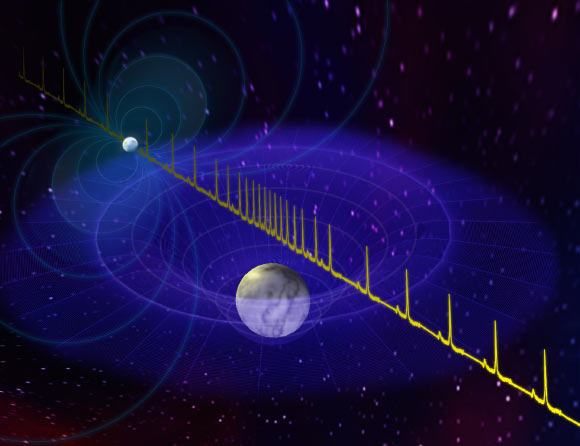Astronomers Find Most Massive Neutron Star Ever Discovered | Astronomy – Sci-News.com
Astronomers using NSF’s Green Bank Telescope have identified a record breaking neutron star with the highest mass yet known. The object, called MSP J0740+6620, is a rapidly rotating millisecond pulsar that packs 2.14 solar masses into a sphere only 15 miles (24 km) across. This measurement approaches the limits of how massive and compact a single object can become without crushing itself down into a black hole.
“Neutron stars are as mysterious as they are fascinating. These objects are essentially enormous atomic nuclei. They are so massive that their interiors take on weird properties,” said Thankful Cromartie, a graduate student at the University of Virginia, and Grote Reber, a researcher at the National Radio Astronomy Observatory.
“Finding the maximum mass that physics and nature will allow can teach us a great deal about this otherwise inaccessible realm in astrophysics.”
“These stars are very exotic. We don’t know what they’re made of and one really important question is: how massive can you make one of these stars? It has implications for very exotic material that we simply can’t create in a laboratory on Earth,” said West Virginia University’s Professor Maura McLaughlin.
Pulsars get their name because of the twin beams of radio waves they emit from their magnetic poles. These beams sweep across space in a lighthouse-like fashion.
Some rotate hundreds of times each second. Since pulsars spin with such phenomenal speed and regularity, astronomers can use them as the cosmic equivalent of atomic clocks.
Such precise timekeeping helps astronomers study the nature of spacetime, measure the masses of stellar objects, and improve their understanding of general relativity.
In the case of MSP J0740+6620, which is located some 4,600 light-years away from Earth and is nearly edge-on in relation to our planet, this cosmic precision provided a pathway for astronomers to calculate the mass of the two stars.
As the ticking pulsar passes behind its white dwarf companion, there is a subtle delay in the arrival time of the signals — a phenomenon known as Shapiro Delay.
In essence, gravity from the white dwarf star slightly warps the space surrounding it, in accordance with Einstein’s general theory of relativity. This warping means the pulses from the rotating neutron star have to travel just a little bit farther as they wend their way around the distortions of spacetime caused by the white dwarf.
Astronomers can use the amount of that delay to calculate the mass of the white dwarf. Once the mass of one of the co-orbiting bodies is known, it is a relatively straightforward process to accurately determine the mass of the other.
“The orientation of this binary star system created a fantastic cosmic laboratory,” said Dr. Scott Ransom, an astronomer at the National Radio Astronomy Observatory.
“Neutron stars have this tipping point where their interior densities get so extreme that the force of gravity overwhelms even the ability of neutrons to resist further collapse. Each ‘most massive’ neutron star we find brings us closer to identifying that tipping point and helping us to understand the physics of matter at these mindboggling densities.”
The research was published in the journal Nature Astronomy.
_____
H.T. Cromartie et al. Relativistic Shapiro delay measurements of an extremely massive millisecond pulsar. Nature Astronomy, published online September 16, 2019; doi: 10.1038/s41550-019-0880-2







